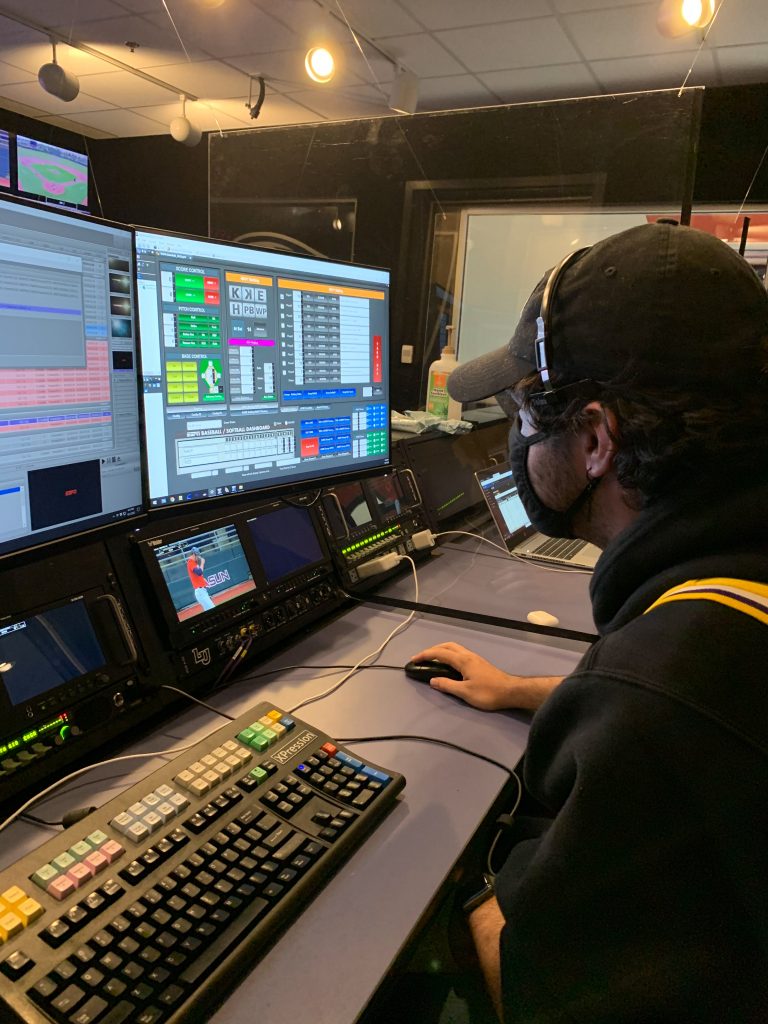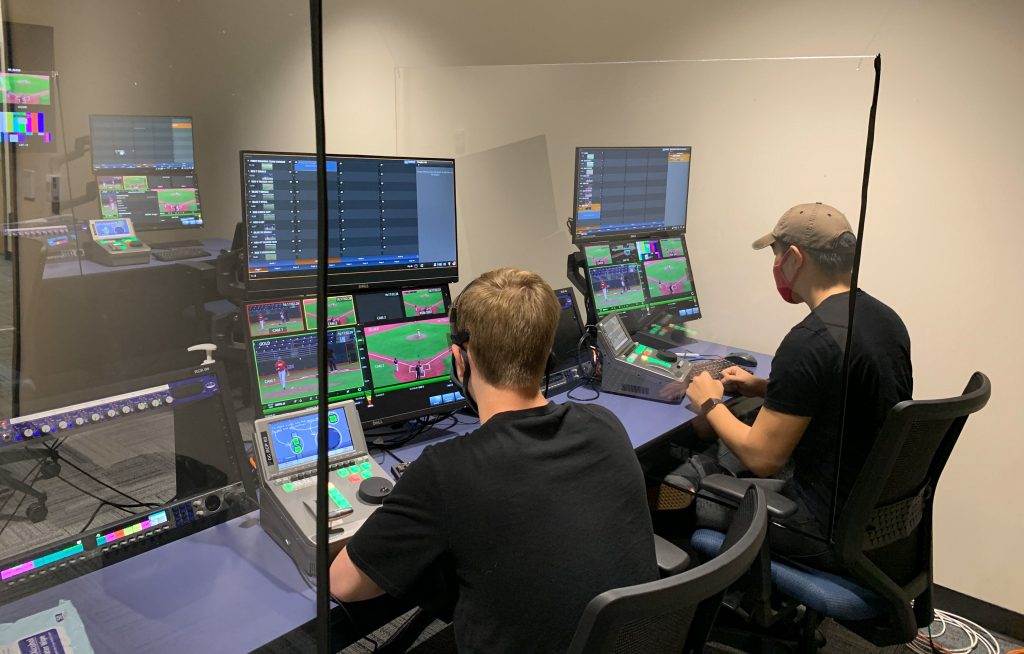When COVID-19 regulations shut down all sporting events back in March, the opportunities for Liberty broadcasting students working for the Liberty Flames Sports Network faded to black with seemingly no return to live action in sight.
Terence Robinson, a junior integrated communications major and audio engineer for LFSN, became one of many LU students locked in a holding pattern because of the lack of live sports broadcasts.
“It was definitely hard to deal with because I went from freelancing maybe four or five times a week to freelancing absolutely no times a week within a couple of days,” Robinson said. “My last two events I did were lacrosse and baseball and then everything shut down and it was like, ‘Wait, what’s happening?’ So, it was a shock and I went from doing everything to doing nothing.”
After months of limbo, LFSN decided to partner with Liberty Athletics to offer a new training opportunity for students that includes live broadcasts of seven different intrasquad scrimmages throughout the fall.
LFSN, an extension of the Liberty University Broadcast Communications Department and Liberty Broadcast eXperience (LBX), provides students with hands-on opportunities to train with industry-standard equipment and broadcast games for Liberty athletics.
Coordinating Producer Christopher Jones is part of a team that trains students to work alongside freelancers and industry professionals to produce Liberty games streamed on one of the ESPN family of networks.
“The goal is to set up an individual to multiply on things that they learned here (at LU) to go out into the field and land a job,” Jones said. “The practices and methodologies that (the students) learn here … should put them in tune with a mindset that they can go out and achieve anything that they come in contact with.”
Jones came to LU last November after an extensive career in the field, which included working for 18 years at ESPN’s headquarters in Bristol, Connecticut.
As a veteran in the sports broadcasting industry, Jones assisted LFSN to find a new way to train students despite the cancellation of all ASUN fall competitions..
Even before the announcement of the Liberty Flames Fall Scrimmage series, Jones, Robinson and others from the LFSN staff worked over the summer to transform Liberty’s control rooms to meet COVID-19 protocols.

The remodeling included putting up plexiglass between every position, shifting seating to be more than six feet apart and moving the replay operators to a completely different room outside of the control room. Where typically 12 or 13 people would work together in a control room, now only five or six are allowed.
“Life is about adaptation,” Jones said. “(The pandemic) has been going on for seven months since March. The plan was placed, the plexiglass was put in, things were moved in order to achieve maximum opportunity for all.”
In addition to Liberty’s three home football games – which included the first two nationally-broadcasted home games in school history – LFSN already streamed coverage of the field hockey and baseball intrasquad scrimmages this fall, with plans to cover a total of five more this semester.
Robinson, who started as an intern with LFSN in June, said he has appreciated the opportunities that have been afforded to him and fellow students, especially during a time when the sports broadcasting field is in such a state of flux.
“I am just really glad to be back and to be able to do events and games again,” Robinson said.
According to Robinson, students are willing to accept the smaller crew size and safety protocols because they are committed to pursuing their passion for sports broadcasting.
“It doesn’t take 40,000 people to do a baseball scrimmage (broadcast). It does take a couple of dedicated people, though,” Robinson said. “And as long as sports teams do what they need to do in terms of staying healthy as a team to have games or scrimmages, then broadcasting (at LU) and at other places across the country is definitely looking up and looking to get back to somewhere (close) to normal.”
But Jones thinks that a new normal may be emerging as a result of the pandemic.
Broadcasters using home studios and online video connections have learned how to use limited resources to gain maximum exposure, a trend that the TV sports industry may continue in the future, Jones said.
“That’s the way it is now and that’s the way it will continue to be,” Jones said. “Regardless of what happens with the pandemic, if you are achieving the same thing that you’ve achieved before but at lesser cost, then that is no reason to return to what you have been doing in the first place.”
Christian Weaner is the Asst. Sports Editor. Follow him on Twitter at @christianweaner.
